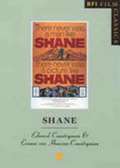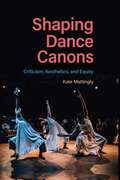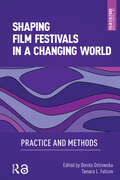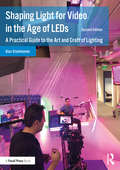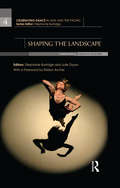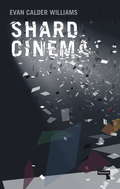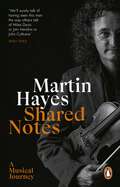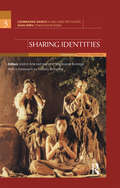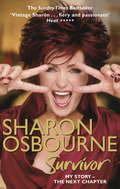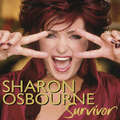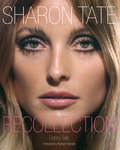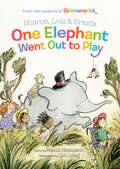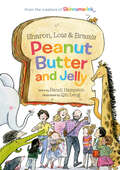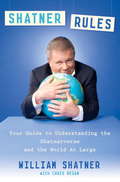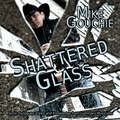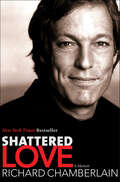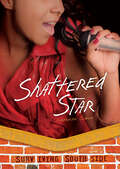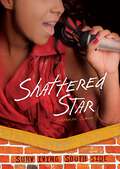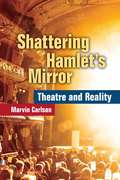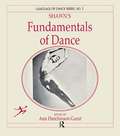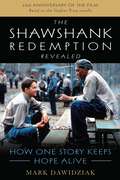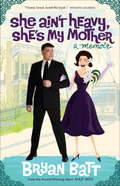- Table View
- List View
Shane
by Edward Countryman Evonne Von Heussen-CountrymanDirected by George Stevens, then one of Hollywood's most successful filmmakers, "Shane" (1952) is one of the most revered and imitated of all westerns. Starring Alan Ladd as a mysterious drifter who protects a fledgling community from a predatory gang, "Shane" is one of the definitive reimaginings of America's frontier mythology. This is, remarkably, the first substantial study of "Shane." In it, Edward Countryman and Evonne von Heussen-Countryman show, with reference to a wide range of historical and archival sources, how subtly the film treats some fundamental themes: family, the history of settlement and community in America, violence, and the culture of the gun.
Shaping Dance Canons: Criticism, Aesthetics, and Equity
by Kate MattinglyExamining a century of dance criticism in the United States and its influence on aesthetics and inclusion Dance criticism has long been integral to dance as an art form, serving as documentation and validation of dance performances, yet few studies have taken a close look at the impact of key critics and approaches to criticism over time. The first book to examine dance criticism in the United States across 100 years, from the late 1920s to the early twenty-first century, Shaping Dance Canons argues that critics in the popular press have influenced how dance has been defined and valued, as well as which artists and dance forms have been taken most seriously. Kate Mattingly likens the effect of dance writing to that of a flashlight, illuminating certain aesthetics at the expense of others. Mattingly shows how criticism can preserve and reproduce criteria for what qualifies as high art through generations of writers and in dance history courses, textbooks, and curricular design. She examines the gatekeeping role of prominent critics such as John Martin and Yvonne Rainer while highlighting the often-overlooked perspectives of writers from minoritized backgrounds and dance traditions. The book also includes an analysis of digital platforms and current dance projects—On the Boards TV, thINKingDANCE, Black Dance Stories, and amara tabor-smith’s House/Full of BlackWomen—that challenge systemic exclusions. In doing so, the book calls for ongoing dialogue and action to make dance criticism more equitable and inclusive.
Shaping Film Festivals In a Changing World: Practice and Methods (Film Culture in Transition)
by Dorota Ostrowska Tamara L. FalicovThis volume is a collective attempt on the part of a community of academics, film festival curators, and archivists to come to terms with practical and intellectual challenges of the pandemic and post-pandemic realities affecting cultures of film festivals. The collection draws contours of critical inquiry orienting current film festival research and practice to explore new directions in archiving and decolonizing practices and big data analysis in the post-Covid-19 context and beyond. The four-part study gathers the voices of academics and practitioners who engage in a dialogue to articulate critical areas for both study and practice of film festivals, and identifies conceptual tools to address them: “Archival Turn,” “Decolonizing Film Festival Studies,” “Post-Covid-19 and Film Festival Studies” and “Data Visualization and Film Festival Research and Practice.”
Shaping Light for Video in the Age of LEDs: A Practical Guide to the Art and Craft of Lighting
by Alan SteinheimerA practical, hands-on guide to lighting for video, this book explores how LEDs are changing the aesthetics of lighting and provides students with an indispensable guide to the everyday techniques required to produce professional-quality lighting in the age of LEDs and wireless control options. The book focuses on first-hand application of technical knowledge, beginning with simple lighting setups and progressing to more complicated scenarios, and features accompanying diagrams, illustrations and case studies to demonstrate their real-world application. Key topics covered include basic three-point lighting, lighting moving actors, set lighting and exposure, instrument selection, bringing style to your lighting, color temperature and the Kelvin scale, exterior lighting, lighting categories and genres, green-screen techniques, money and budgeting, and electricity and electrical distribution. The book also provides guidance on career paths including what a grip does, case studies with photos and diagrams, and an extensive glossary of set terminology to introduce students to the language of filmmaking. A must-have resource for film and media production students taking classes in lighting and/or cinematography.
Shaping the Landscape: Celebrating Dance in Australia (Celebrating Dance in Asia and the Pacific)
by Stephanie Burridge; Julie DysonThis, the fourth book in the series 'Celebrating Dance in Asia and the Pacific', explores the current dance scene in Australia from a wide perspective that mirrors the creative engagement of artists with Australian culture and the landscape. It looks at Indigenous dance, choreography beyond theatre, youth and community dance, Australian dancers’ versatility and risk-taking. The comprehensive essays recount immigrant influences, the legacy of the Ballets Russes and Bodenwieser companies, dance on stage and screen, education and training and the story of Ausdance — the unique nation-wide voice and political advocacy organisation for dance.
Shard Cinema
by Evan Calder WilliamsShard Cinema tells an expansive story of how moving images have changed in the last three decades and how they changed us along with them, rewiring the ways we watch, fight, and navigate an unsteady world. With a range that spans film, games, software, architecture, and military technologies, the book crosses the twentieth century into our present to confront a new order of seeing and making that took slow shape: the composite image, where no clean distinction can be made between production and post-production, filmed and animated, material and digital. Giving equal ground to costly blockbusters and shaky riot footage, Williams leads us from computer-generated “shards” of particles and debris to the broken phone screen on which we watch those digital storms, looking for the unexpected histories lived in the interval between.
Shared Notes: A Musical Journey
by Martin HayesMartin Hayes spent his childhood on a farm in County Clare, in a household steeped in musical tradition. After a free-spirited youth, he headed to the United States where he built a career that led to a life of musical performance on stages all over the world. Shared Notes traces this remarkable journey.Picking up his first fiddle at the age of seven, Hayes learned that music must express feeling. No amount of technical prowess can compensate for an absence of soulfulness. His interpretations of traditional Irish music are recognized the world over for their exquisite musicality and irresistible rhythm.Hayes has toured and recorded with guitarist Dennis Cahill for over twenty years, founded the Irish-American band The Gloaming, The Martin Hayes Quartet and The Common Ground Ensemble, and here, for the first time, tells his story of getting to the heart of the music.
Sharing Identities: Celebrating Dance in Malaysia (Celebrating Dance In Asia And The Pacific Ser.)
by Mohd Anis Md NorThis anthology celebrates dancing diversities in Malaysia, a multicultural nation with old and not-so-old dance traditions in a synchronicity of history, creativity, inventions and representation of its people, culture and traditions. These articles and interviews document the legacy of dances from the Malay Sultanates to a contemporary remix of old and new dances aspired by a mélange of influences from the old world of India, China, European and indigenous dance traditions. This gives forth dance cultures that vibrate with multicultural dance experiences. Narratives of eclecticism, syncretic and innovative dance forms and styles reflect the processes of inventing and sharing of dance identities from the era of the colonial Malay states to post-independence Malaysia.
Shark Week: Everything You Need to Know
by Martha BrockenbroughGliding through the water at breakneck speeds--a fin, just skimming the surface of the water. The biggest jaws you've ever seen. These are the iconic images that flash through all our minds when we think of sharks, but there's so much more to know about these majestic predators of the sea.If you're already a fan of the Discovery's phenomenon Shark Week, then you will love this book! From the unique look of the prehistoric Whorl shark, to the hunting techniques of the Great White, all the thrills and chills of Shark Week are now here for year-round reading. Filled with photos, first-hand accounts of shark attacks, and unbelievable facts (Did you know that there are sharks that live in volcanoes?), this book is for every shark fanatic who wants to get even more up close and personal.Now you really can live every week like it's shark week.
Sharon Osbourne Survivor: My Story - the Next Chapter
by Sharon Osbourne'Vintage Sharon . . . fiery and passionate' - HEAT'The formidable Mrs O is just as honest and open in this second instalment of her life story as the first . . . a real page-turner' - WOMAN'Shazza goes even deeper to reveal the secrets behind the headlines' - LOOK'Like Extreme, Survivor is eye-wateringly frank, and very funny' - EVENING STANDARDSharon Osbourne's life has always been full of drama, heartbreak and passion. When she completed her bestselling first book, Extreme, she had hoped to find some peace and stability after her rollercoaster years. It was not to be. In Survivor, her brand-new memoir, she reveals what really happened next. From famous celebrity feuds, to her eventful experiences on The X Factor, to her turbulent relationship with her father and the tragic impact of his death, Sharon remains as frank and insightful as ever. Never afraid to admit to her own problems, she is brutally honest about her weight issues and plastic surgery. And she describes movingly how her husband's unconditional love finally brought her true happiness, even amidst all the chaos of her life.
Sharon Osbourne Survivor: My Story - the Next Chapter
by Sharon Osbourne'Vintage Sharon . . . fiery and passionate' - HEAT'The formidable Mrs O is just as honest and open in this second instalment of her life story as the first . . . a real page-turner' - WOMAN 'Shazza goes even deeper to reveal the secrets behind the headlines' - LOOK'Like Extreme, Survivor is eye-wateringly frank, and very funny' - EVENING STANDARDSharon Osbourne's life has always been full of drama, heartbreak and passion. When she completed her bestselling first book, Extreme, she had hoped to find some peace and stability after her rollercoaster years. It was not to be. In Survivor, her brand-new memoir, she reveals what really happened next. From famous celebrity feuds, to her eventful experiences on The X Factor, to her turbulent relationship with her father and the tragic impact of his death, Sharon remains as frank and insightful as ever. Never afraid to admit to her own problems, she is brutally honest about her weight issues and plastic surgery. And she describes movingly how her husband's unconditional love finally brought her true happiness, even amidst all the chaos of her life.
Sharon Osbourne Survivor: My Story - the Next Chapter
by Sharon Osbourne'Vintage Sharon . . . fiery and passionate' - HEAT'The formidable Mrs O is just as honest and open in this second instalment of her life story as the first . . . a real page-turner' - WOMAN 'Shazza goes even deeper to reveal the secrets behind the headlines' - LOOK'Like Extreme, Survivor is eye-wateringly frank, and very funny' - EVENING STANDARDSharon Osbourne's life has always been full of drama, heartbreak and passion. When she completed her bestselling first book, Extreme, she had hoped to find some peace and stability after her rollercoaster years. It was not to be. In Survivor, her brand-new memoir, she reveals what really happened next. From famous celebrity feuds, to her eventful experiences on The X Factor, to her turbulent relationship with her father and the tragic impact of his death, Sharon remains as frank and insightful as ever. Never afraid to admit to her own problems, she is brutally honest about her weight issues and plastic surgery. And she describes movingly how her husband's unconditional love finally brought her true happiness, even amidst all the chaos of her life.
Sharon Tate: Recollection
by Debra Tate Roman PolanskiConsidered by many to be the most beautiful woman of her generation, Sharon Tate remains a fascinating pop icon and a poster child for the 1960s. What most struck those who knew Sharon was her gentle nature and the sheer perfection of her face, but she was far more than just a beauty. The few films she made during her brief career, including Valley of the Dolls, Eye of the Devil, and The Fearless Vampire Killers, have taken on a cult status. Over forty years since her last film, Sharon's spirit and charisma lives strong in the memories of those who knew her best, and her style continues to inspire the worlds of fashion, beauty, art, and film.Sharon Tate: Recollection is a one-of-a-kind celebration of Sharon's life and career, her influence as a fashion icon throughout the world, and in effect presents a sociological portrait of the 1960s-its youth culture, the sexual revolution, Hollywood's changing studio system, and the rise of independent cinema. In this dazzling photo book, Sharon Tate's story emerges through quotes and short essays-recollections-by her sister, Debra Tate, as well as by those who knew and who have been influenced by her. An all-star cast contributing memories and thoughts on Sharon includes Jack Nicholson, Warren Beatty, Robert Evans, Mia Farrow, Raquel Welch, Hugh Hefner, Michelle Phillips, Patty Duke, Barbara Parkins, Jane Fonda, Drew Barrymore, and Kelly Osbourne. The book is filled with hundreds of rare and unpublished photos of Sharon Tate taken by the likes of Milton Greene, David Bailey, Terry O'Neill, Richard Avedon, Bert Stern, Norman Parkinson, Philippe Halsman, John Engstead, and more.What emerges from these pages is a stunning tribute to an unforgettable life.
Sharon, Lois and Bram's One Elephant Went Out to Play (Sharon, Lois & Bram's Classic Songs)
by Sharon Hampson Lois Lillienstein Bram Morrison Randi HampsonFrom the creators of Skinnamarink comes another picture book based on the classic counting song made famous by this beloved trio of children's entertainers.One elephant went out to play upon a spider's web one day. She had such enormous fun, that she called for her baby elephant to come.Sharon, Lois and Bram invite readers to join them in a musical story about a magical spider web. Jungle animals and kids in costume join in the fun on the web, including a glamorous giraffe, a cranky crocodile, a silly, smiley snake and five monkeys. After the 10th animal is invited onto the web, EVERYONE is invited to the party — but is the web strong enough? Through Qin Leng's wonderfully whimsical illustrations, this delightful picture book tells the story of a diverse group of children coming together in play and song.
Sharon, Lois and Bram's Peanut Butter and Jelly (Sharon, Lois & Bram's Classic Songs)
by Sharon Hampson Lois Lillienstein Bram Morrison Randi HampsonFrom the creators of Skinnamarink comes another picture book based on the classic sandwich song made famous by this beloved trio of children's entertainers.First you dig the peanuts and you dig 'em, you dig 'em, you dig 'em, dig 'em, dig 'em. Peanut, peanut butter, JELLY! Sharon, Lois & Bram invite readers to join them on an adventure to a magical place where a diverse group of animals and children come together to create the most delicious of snacks: a peanut butter and jelly sandwich! Accompanied by Qin Leng's wonderfully whimsical illustrations, this delightful picture book celebrates friends, community, music and a favorite tasty treat — mmm mmm mmmm!
Sharon, Lois and Bram's Skinnamarink (Sharon, Lois & Bram's Classic Songs)
by Sharon Hampson Lois Lillienstein Bram MorrisonNational bestseller — Based on the classic folk song made famous by a beloved trio of children's entertainers, this board book is best sung aloud! "Skinnamarink" is a timeless anthem of love and inclusion.What does "skinnamarink" mean? You may not find its definition in a dictionary, but the meaning is clear to the generations of children who sang along: friendship, happiness, sharing, community and, ultimately, love. This song has been sung in weddings and in classrooms. It can be fun and silly — especially with the accompanying actions! And it has a way of bringing people together. Through Qin Leng's wonderfully imaginative illustrations, this delightful board book tells the story of a community coming together. Young and old, from little mice to a big elephant, people and animals gather into a spontaneous parade as they follow the sound of music.Sharon, Lois and Bram formed as a trio of children's entertainers in Toronto in 1978 and went on to create two top-rated children's television shows, most notably The Elephant Show, and to release 21 full-length albums (many of which reached gold, platinum, double platinum and triple platinum). In 2018, Sharon and Bram celebrated their 40th anniversary and they continue to entertain children and share their message of love.
Shatner Rules
by William ShatnerYou love William Shatner. You admire his many and varied talents. You appreciate his creativity and willingness to take risks. You want to learn his master negotiation techniques. You wish you could hang out with him. Admit it. You want to BE William Shatner. And now. . . you can (almost). To be Shatner, you must follow the rules included in this lively, entertaining, and thought-provoking volume. This collection of rules and fun factners, illustrated with stories from Bill’s illustrious life and career, will show you how Bill became WILLIAM SHATNER, larger than life and bigger than any role he ever played. Shatner Rules is your guide to becoming William Shatner. Or more accurately, beautifully Shatneresque. Because let's face it. . . Shatner does rule, doesn't he? .
Shattered Glass
by Mike GouchieMike Gouchie is an indigenous Nashville recording artist. Over his musical career he’s had the privilege of opening for country legend George Jones on a cross Canada tour and has shared stages with Alan Jackson, Lonestar, Billy Currington, the Neville Brothers, Jo Nichols, and many others. A ten-time award-winning Country Recording Artist with deep Indigenous roots, Mike’s journey through the highs of the spotlight and the lows of life behind the curtain is as real as it gets. In Shattered Glass , he shares his raw and riveting story — an unfiltered look at the pursuit of a dream in an industry that rarely plays fair. Because sometimes, the ones who almost made it are the ones with the most powerful story to tell.
Shattered Love: A Memoir
by Richard ChamberlainIn Shattered Love, Richard Chamberlain poignantly recounts his lifelong struggle to find happiness. Tracing a fascinating path over his meteoric rise to success, he chronicles his struggle to come to terms with his own imperfections, his growing desire to be honest about his sexual orientation, and his yearning to live with an open heart. And along the way he imparts the lessons he has learned about overcoming our own self–imposed obstacles to happiness.
Shattered Star (Surviving Southside Ser.)
by Charnan SimonWhat's the price of fame? Cassie is the best singer in Southside High's Glee Club and dreams of being famous. She skips school to try out for a national talent competition. But her hopes sink when she sees the line. Then a talent agent shows up out of nowhere. Cassie is flattered to hear she has "the look" he wants. Soon, she is lying and missing rehearsal to meet with him. And he's asking her for more each time. How far will Cassie go for her shot at fame?
Shattered Star (Surviving Southside)
by Charnan SimonWhat's the price of fame? Cassie is the best singer in Southside High's Glee Club and dreams of being famous. She skips school to try out for a national talent competition. But her hopes sink when she sees the line. Then a talent agent shows up out of nowhere. Cassie is flattered to hear she has "the look" he wants. Soon, she is lying and missing rehearsal to meet with him. And he's asking her for more each time. How far will Cassie go for her shot at fame?
Shattering Hamlet's Mirror: Theatre and Reality
by Marvin CarlsonTheatrical playing, Hamlet famously averred, holds a mirror up to nature. But unlike the reflections in the mirror, the theater's images are composed of real objects, most notably bodies, that have an independent existence outside the world of reflection. Throughout Western theater history there have been occasions when the reality behind the illusion was placed on display. In recent years theaters in Europe and North America have begun calling attention to the real in their work--presenting performers who did not create characters and who may not even have been actors, but who appeared on stage as themselves; texts created not by dramatic authors but drawn from real life; and real environments sometimes shared by actors and performers and containing real elements accessible to both. These practices, argues Marvin Carlson, constitute a major shift in the practical and phenomenological world of theater, and a turning away from mimesis, which has been at the heart of the theater since Aristotle. Shattering Hamlet's Mirror: Theatre and Reality examines recent and contemporary work by such groups as Rimini Protokoll, Societas Raffaelo Sanzio, the Gob Squad, Nature Theatre of Oklahoma, and Foundry Theatre, while revealing the deep antecedents of today's theater, placing it in useful historical perspective. While many may consider it a post-postmodern phenomenon, the "theater of the real," as it turns out, has very deep roots.
Shawn's Fundamentals of Dance (Language of Dance)
by Ann Hutchinson GuestFirst Published in 1988. Routledge is an imprint of Taylor & Francis, an informa company.
Shawshank Redemption Revealed: How One Story Keeps Hope Alive
by Mark DawidziakA 25th anniversary history and celebration of The Shawshank Redemption, one of the most cherished American films of the late twentieth century and one of the finest movies made from a Stephen King story. The movie not only boasts a great story, it has a great backstory, starting with the dollar deal that eventually led King and co-stars Tim Robbins and Morgan Freeman to put their trust in a largely untested director making his first feature film. Although the film received mostly positive reviews on its release in September 1994, the box office was disappointing and it failed to win many awards. But as Andy tells Red in the film, &“no good thing ever dies.&” The movie found new life, reaching an ever-growing audience on cable and home video (through word of mouth, it became one of the top-rented movies of 1995). Each year, The Shawshank Redemption rises in polls asking film fans to name their favorite movies. It has become nothing less than this generation&’s The Grapes of Wrath, an inspiring story about keeping hope alive in bleak times and under the most horrendous conditions.
She Ain’t Heavy, She’s My Mother: A Memoir
by Bryan BattGayle Batt is the kind of lady who throws elegant cocktail parties while wearing layers of silk chiffon, dripping pearls, and eight months' pregnant. She is the kind of woman who says "anyhoo" and calls everyone "Dahlin'" or a special pet name. With hair, makeup, and nails always done to perfection, she triumphs rather than crumbles when infidelity, alcoholism, cancer, or any form of adversity attempts to shatter her family. Endearing and enduring, Gayle is a big-hearted, strong-willed true Southern belle-and she taught her son everything he knows about being a man. In She Ain't Heavy, She's My Mother, Bryan Batt, the actor who plays Sal Romano on the Emmy, Golden Globe, and Peabody Award-winning Mad Men, chronicles his life-and his mother's supportive presence in it. From growing up gay below the Mason-Dixon Line to landing principal roles on Broadway (his first was on roller skates playing a singing and dancing boxcar in Starlight Express!) and later on the picture-perfect sets of TV's Mad Men, to opening the ever-popular Hazelnut boutique in his hometown of New Orleans with his partner, Bryan weaves a touching and hilarious story of the South, showbiz, and an unshakable bond between mother and son.
